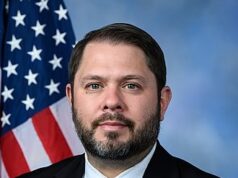New Homeless Numbers Underscore Urgency to Increase Investment in Proven Solutions
Despite Long-Term Gains in Communities Nationwide, Total Homelessness Sees Its First Increase in Seven Years
December 13, 2017, Washington, D.C. – (RealEstateRama) — A new report released today by the U.S. Department of Housing and Urban Development (HUD) shows that total homelessness increased this year for the first time since 2010. The 2017 Annual Homeless Assessment Report (AHAR) to Congress reports that on a single night in 2017, 553,742 people were identified as experiencing homelessness, representing an increase of less than one percent over last year.
Despite the overall increase, the report also shows that the majority of states and communities in the nation reported decreases in homelessness. In fact, current levels of homelessness remain two percent lower than they were in 2015, and 13 percent lower than in 2010.
The report comes at a time when cities across the nation are facing an affordable housing crisis. Rents are up year-over-year in 89 of the 100 largest cities, according to the Apartment List National Report, with rent growth pacing ahead of the overall rate of inflation, and just slightly ahead of average hourly earnings.
The AHAR report illustrates a particularly significant rise in unsheltered homelessness (12 percent), with the largest increases in major cities, including Los Angeles, Oakland, Sacramento, Seattle, San Diego, Las Vegas, New York, and Washington, D.C.
“Unsheltered homelessness is on the rise, and major cities are feeling it most,” said Nan Roman,
President and CEO of the National Alliance to End Homelessness. “As cities bear the burden of
increasing unsheltered counts, it is essential that they address the affordable housing crisis, increase investments in proven housing interventions, and ensure that they have appropriate emergency shelter capacity.”
The report also details increases among homeless veterans – a population that has benefitted from targeted federal resources for the past several years. This year’s two percent increase is the first for homeless veterans since 2010. It was mostly noted in major cities, with smaller cities and rural areas continuing to see decreases.
“Veteran homelessness has been one of the major success stories in the effort to end homelessness, but the job isn’t done,” said Roman. “This increase is a stark reminder that we must maintain urgency for veterans. That means protecting resources that have worked for them to date, especially the HUDVeterans Affairs Supportive Housing program.”
Moving forward, the report foreshadows the importance of addressing the affordable housing crisis. “Ending homelessness is a complex, long-term effort,” said Roman. “For several years we’ve seen homeless systems become more efficient and effective and getting people into housing. But the effectiveness of the homeless assistance efforts cannot make up for the increasing number of people who become homeless because they simply cannot afford housing. In the short run we will need more investment in effective homelessness programs. In the longer run, we need to address the increasing inability of poor and low income people to find affordable places to live.”
About the National Alliance to End Homelessness
The National Alliance to End Homelessness is a nonprofit, non-partisan, organization committed to preventing and ending homelessness in the United States. As a leading voice on the issue of homelessness, the Alliance analyzes policy and develops pragmatic, cost-effective policy solutions; works collaboratively with the public, private, and nonprofit sectors to build state and local capacity; and provides data and research to policymakers and elected officials in order to inform policy debates and educate the public and opinion leaders nationwide.
CONTACT:
Tom Murphy
Director of Communications
202-942-8254
###













